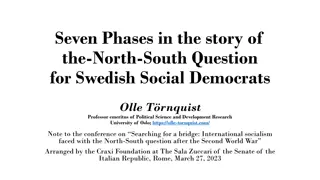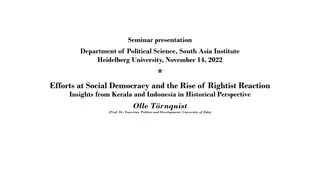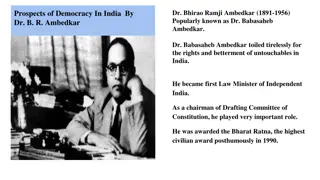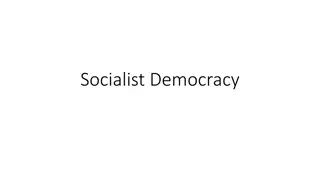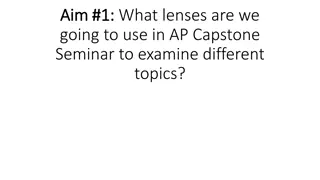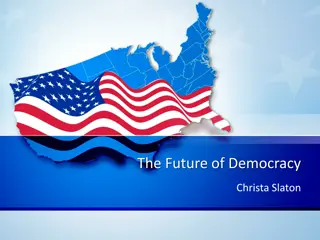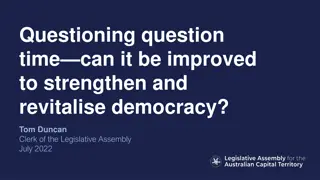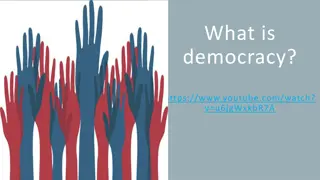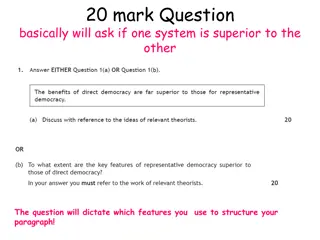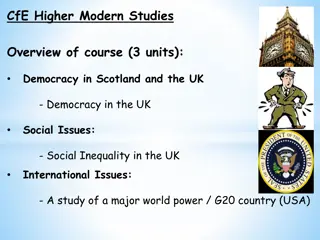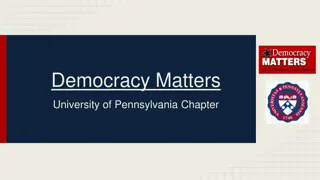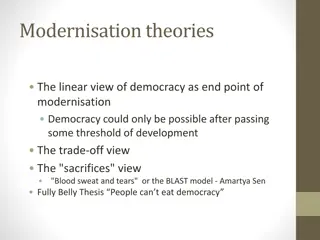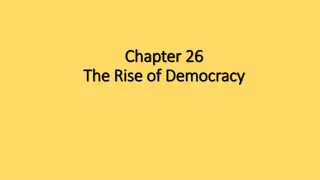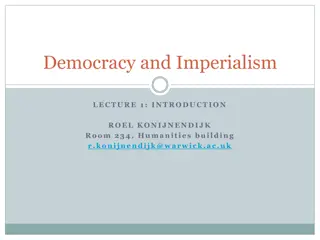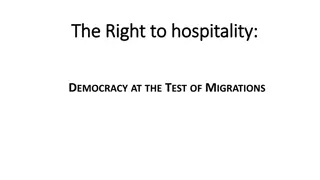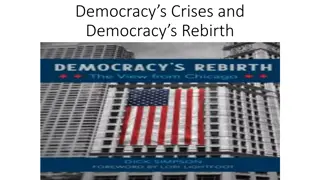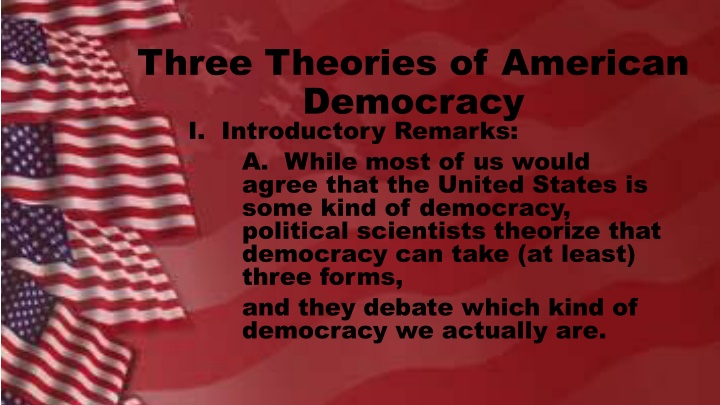
Three Theories of American Democracy: Participatory Model Explained
Explore the concept of Participatory Democracy within the framework of American democracy, including its direct and republican forms, as citizens influence public policy through voting and direct interaction with elected officials.
Download Presentation

Please find below an Image/Link to download the presentation.
The content on the website is provided AS IS for your information and personal use only. It may not be sold, licensed, or shared on other websites without obtaining consent from the author. If you encounter any issues during the download, it is possible that the publisher has removed the file from their server.
You are allowed to download the files provided on this website for personal or commercial use, subject to the condition that they are used lawfully. All files are the property of their respective owners.
The content on the website is provided AS IS for your information and personal use only. It may not be sold, licensed, or shared on other websites without obtaining consent from the author.
E N D
Presentation Transcript
Three Theories of American Democracy I. Introductory Remarks: A. While most of us would agree that the United States is some kind of democracy, political scientists theorize that democracy can take (at least) three forms, and they debate which kind of democracy we actually are.
A. Participatory Democracy - A model of democracy in which citizens determine public policy either directly or through their elected representatives who serve their interests.
A. Participatory Democracy - 1. Two forms of Participatory Democracy: a. Direct Democracy - A democracy in which citizens determine policy by directly voting for the laws. b. Republican Democracy - A democracy in which citizens determine policy by voting for representatives who make the laws.
A. Participatory Democracy - 2. The evidence that our republic is indeed a participatory democracy. a. It is consistent with our ordinary experience of how America works 1.) The citizen's vote. 2.) Whoever gets the most votes wins. 3.) If they do not serve the citizens' interests, they vote for someone else who will.
A. Participatory Democracy - 2. The evidence that our republic is indeed a participatory democracy. a. It is consistent with our ordinary experience of how America works" 4.) Besides voting, citizens sometimes directly interact with our elected officials: a.) Town Hall Meetings where local citizens gather to meet with local officials.
A. Participatory Democracy - 2. The evidence that our republic is indeed a participatory democracy. a. It is consistent with our ordinary experience of how America works" 4.) Besides voting, citizens sometimes directly interact with our elected officials: b.) Scheduled office meetings (which are hard to get, but still ).
A. Participatory Democracy - 2. The evidence that our republic is indeed a participatory democracy. a. It is consistent with our ordinary experience of how America works" 4.) Besides voting, citizens sometimes directly interact with our elected officials: c.) Phone, email, or social media communication d.) Protests
A. Participatory Democracy - 2. The evidence that our republic is indeed a participatory democracy. b. There are also examples of direct participatory democracy in our republic as well: 1.) Ballot initiatives and Referendums.
B. Pluralist Democracy - A theory of democracy which holds that various interest groups team up to form coalitions that control the government and public policy.
B. Pluralist Democracy - 1. The theory: a. American citizens decide which policies they want to support which leads them to support particular interest groups that are fighting for those policies.
B. Pluralist Democracy - 1. The theory: b. Some interest groups have more resources (like money and members) to help get politicians elected and more access these politicians once they are elected than other interest groups do. c. Nevertheless, no interest group has the resources or access to control political outcomes on its own.
B. Pluralist Democracy - 1. The theory: d. So, various interest groups pool together their resources by teaming up into huge "coalitions." e. Whichever coalition ends up amassing more resources than the others controls the government and, therefore, public policy.
B. Pluralist Democracy - 2. The evidence: a. There are thousands of interest groups in America that attempt to control public policy exactly as this theory describes. b. There are examples of some particular interest groups that seem to have tremendous influence over politicians. 1.) The NRA
C. Elite "Democracy"
C. Elite "Democracy" - The theory that a small group of powerful individuals (like the ultra- wealthy) control public policy.
C. Elite "Democracy" - 1. The evidence: a. It does cost an exorbitant amount of money to run for public office. Perhaps this makes our political leaders dependent on people who make large contributions to their campaigns. b. Some consider the electoral college an example of elite "democracy" as it has selected a president who did not receive the vote of the majority three times.
II. Which theory, if any, is correct? A. Since there is evidence for all of these theories, perhaps America is a mixture of all three. B. Still, it leaves one wondering if America is 'mostly' a participatory, pluralist, or elite democracy (or if there is some other possible theory that may explain America better than any of these three).

